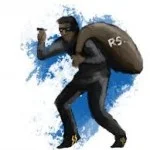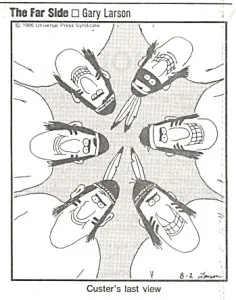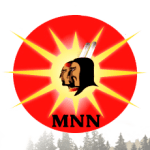
MNN. May 16, 2024. Duplessis Orphans and Mohawk Mothers: Details on stopping SAQ [Quebec Liquor Board] from starting their construction work on the former site of the former cemetary of St-Jean-de-Dieu “asylum” Tiohtià:ke /Montreal.

SAYUMKI’YA’ASEH
On May 16, 2024, faced with the SAQ’s refusal to let the HHRDDs enter the site to ensure that no graves will be disturbed or destroyed, the Duplessis Orphans and Mohawk Mothers may have no choice but to seek to file the appropriate emergency legal applications, while being prepared to use mediation or negotiation before going to court if work is halted. On May 14, 2024, the Comité des Orphelins et Orphelines Institutionnalisé.es de Duplessis and the Kanien’keha:ka Kahnistensera (Mohawk Mothers) sent a formal notice to the Société des alcools du Québec (SAQ), demanding an immediate halt to all excavation work on the site of the former pauper’s cemetery of the St-Jean-de-Dieu psychiatric “asylum” in Montreal’s east end. This move follows the SAQ’s categorical refusal to employ historic human remains detection dogs (HHRDD) and other non-invasive techniques recommended by the Canadian Archaeological Association’s Working Group on Unmarked Graves (CAAWGUG), the country’s leading authority on the proper techniques for investigating these contexts.
“The SAQ has ignored our repeated calls to thoroughly investigate this tragic site where Duplessis orphans and Indigenous children suffered abuse and inhumane medical experimentation,” said Kahentinetha, speaking on behalf of the Mohawk Mothers. “Their remains could be buried in unmarked graves that the SAQ is preparing to disturb with no respect for their dignity.” Rejecting the use of HHRDDs, the provincial Crown corporation chose to go ahead with its proposed development project immediately, disregarding the expert’s recommendations and the demands of the impacted communities and survivors, the Duplessis Orphans and the Mohawk Mothers. “This is an insult to the memory of our lost brothers and sisters,” added Hervé Bertrand, representing the Duplessis Orphans. “The SAQ must be held accountable and demonstrate transparency by immediately suspending work until a proper investigation is carried out.”
This formal notice is a response to the SAQ’s neglect of basic human rights and its refusal to promote reconciliation and healing. The groups involved are urging the media to amplify their voices and hold the SAQ accountable on this critically important issue. GBM partner Frédéric Bérard will be representing the Duplessis Orphans. Faced with the SAQ’s refusal to let the HHRDDs enter the site to ensure that no graves will be disturbed and destroyed, the Duplessis Orphans and Mohawk Mothers may have no choice but to seek to file the appropriate emergency legal applications, while being prepared to use mediation or negotiation before going to court if work is halted.
For interviews, further information or access to supporting documents, please contact Philippe Blouin at 514-463-8835 or philippe.enver.blouin@gmail.com.
____________
BACKGROUND & TIMELINE: On January 9, 2024, the Duplessis Orphans and Mohawk Mothers wrote a letter to the SAQ stating that work planned for a new automated distribution center risked disturbing and destroying human remains from the former cemetery known as the “pigsty cemetery”, where more than 2,000 patients from the St-Jean-de-Dieu psychiatric asylum whose bodies were unclaimed had been buried between the years 1870 and 1958. The Duplessis Orphans and Mohawk Mothers requested the use of non-invasive technologies, and of qualified, independent experts and cultural monitors during any archaeological investigations, and that a discussion be opened with the goal of discussing an independent inquiry into the history of the people buried in the cemetery, and the potential atrocities that led to these deaths.
The letter of January 9, 2024 reminded the SAQ that, after the Sisters of Providence had exhumed more than 2,000 bodies from this cemetery for unclaimed patient’s bodies in 1967, additional remains had been accidentally found in 1975, during the construction of the SAQ’s first warehouse, showing that the first exhumation had been incomplete. In 1975, these bodies were exhumed by a construction company and moved in plastic bags to a mass grave at Repos St-François d’Assise, without the presence of an archaeologist or forensic expert. In testimony to the Superior Court, Sister Marie-Paule Lévaque admitted that she did not know the exact extent of the cemetery. Then, in 1999, the Journal de Montréal reported another accidental discovery of human remains in a zone quite far from the “pigstry cemetery,” during a new SAQ warehouse expansion project led by SAQ president Gaétan Frigon and then Parti Québécois minister François Legault. The SAQ has been unable to locate or provide a report or any information whatsoever about the bones found in 1999.
Between February and May 2024, a total of eight (8) meetings took place between the SAQ, the Mohawk Mothers and the Duplessis Orphans. The latter two groups learned in April that on the very day of their first meeting, February 23, 2024, the SAQ had privately hired Arkéos Inc. to submit an archaeological permit application to the Ministère de la Culture et des Communications (MCC), without consulting the Duplessis Orphans or the Mohawk Mothers. The inventory application submitted by the SAQ and its contractor avoided the requests of the Orphans and Mohawk Mothers for the use of non-invasive technologies specifically designed to detect human remains, such as georadar and Historic Human Remains Detection Dogs (HHRDD) – trained to detect historic human bones at depths of several metres – which are most appropriate when there is a potential for the discovery, disturbance and destruction of human remains.
The Arkéos inventory was not specifically designed to identify and preserve unmarked graves or burials, but rather to identify the remains of material heritage such as buildings, roads and artifacts. Its sampling approach, which suggested that the failure to find complete remains in four (4) trenches dug in certain areas of the site eliminated any possibility of human remains elsewhere, was insufficient to reassure survivors whose loved ones were buried in this cemetery as a result of mistreatment, which included lobotomies.
The Orphans have been calling since 2002 for the exhumation of the bodies buried in the “pigsty cemetery”, the heart of which lies beneath the current SAQ warehouse, to find the evidence of medical experiments and atrocities committed against children. Following the SAQ’s unilateral decision, the Duplessis Mothers and Orphans wrote to the MCC to make additional submissions to ensure that the archaeological permit would take into account the need to use non-invasive techniques to exclude or confirm the presence of human remains on the entire site, but their message was ignored by the Ministry.
Anxious to accommodate the work schedule, the Duplessis Orphans and Mohawk Mothers made a compromise at a meeting held on April 2, 2024, agreeing to work with the contractor selected by the SAQ for an archaeological inventory on the condition that SAQ request and respect the recommendations of independent experts specifically experienced in the use of non-invasive methods and in the search for unmarked graves. At this meeting, all parties agreed to involve Canada’s leading authority on the search for unmarked graves at residential school and on hospital grounds, the Canadian Archaeological Association’s Working Group on Unmarked Graves (CAAWGUG). In an e-mail dated April 4, 2024, the SAQ altered the verbal agreement to request and respect the CAAWGUG recommendations instead to a commitment to hold an information session with the CAAWGUG. As a result of this change of heart, the Duplessis Orphans and Mohawk Mothers had to cancel a traditional condolence ceremony to authorize and inaugurate Arkéos’ research according to Indigenous spiritual protocol.
On April 10, the SAQ finally agreed in writing to suspend work until the CAAWGUG had made its recommendations, and the condolence ceremony was held on April 16, 2024, followed by Arkéos’ inventory. Holding this ceremony was conditional on the involvement of CAAWGUG and a commitment that an independent investigation would be carried out in line with best practices determined by the experts specializing in archaeological investigations at sites potentially containing anonymous burials.
Representatives of CAAWGUG attended a meeting with all parties on May 8, 2024. At this meeting, the SAQ’s contractor, Arkéos, presented a preliminary report “liberating the site” from archaeological restrictions and not recommending any additional measures on site, not including the presence of archaeologists and cultural monitors during the construction work to identify human remains which might be discovered accidentally. It is important to note that the SAQ and Arkéos made this decision despite the fact that only just over half of the bones excavated at the site could be visually identified as being of animal origin, and that no laboratory tests were planned for bone fragments that could not be visually identified.
At the May 8, 2024 meeting, CAAWGUG representatives were finally able to obtain from the SAQ some of the documentation needed to make recommendations appropriate for the site’s context, and indicated that they would be able to provide their recommendations in less than seven (7) days to accommodate the SAQ’s concerns about their project timeline.
On May 9, 2024, reneging on its commitment to wait for the CAAWGUG report, the SAQ announced in a press release that the archaeological investigation was complete, that no human remains had been positively identified on the site, and that work would resume during the week of May 13, 2024. The CAAWGUG shared its official recommendations around the same time as the SAQ’s May 9 press release. In these recommendations, the CAAWGUG called for the use of HHRDD throughout the site and on the excavated bones to detect any human remains, as well as the presence of monitors during all excavation work.
On May 14, 2024, the SAQ held a meeting with the Duplessis Orphans and Mohawk Mothers to announce that they had decided that the CAAWGUG recommendations would not be followed, that HHRDD would not be used on the site, and that construction would resume immediately without further action. In a press release dated May 15, 2024, the SAQ demonstrated an appalling lack of understanding of the work of the CAAWGUG, which it confused with the broader organization that is the Canadian Association of Archaeologists (CAA), stating that “the CAA is not a professional order, but an association that brings together archaeologists, amateur archaeologists and members of the general public.” This misinformation is extremely worrying coming from a provincial Crown-corporation that acknowledges it has “neither the expertise nor the authority to determine the process of archaeological investigation or analysis of recovered artifacts.” Unlike the CAA, the CAAWGUG brings together fifteen (15) professional archaeologists and scholars selected specifically for their expertise in the search for unmarked graves and burials in humanitarian contexts, such as residential schools. Far from a group of “amateur archaeologists”, the CAAWGUG was recently awarded the 2024 Governor General’s Award for Innovation, which noted that the group “continues to lead the nation with guidance, training, support and assistance for communities conducting searches for children who disappeared from residential schools.”
In its May 15, 2024 press release, the SAQ states, without further explanation, that “regarding the use of HHRDDs, we have referred the matter to the relevant authorities for evaluation. Their conclusions stipulate that this type of method is not appropriate for our site.” Without naming said “competent authorities”, this unjustified rejection of the use of HHRDDs is incomprehensible to the Orphans, the Mohawk Mothers and the survivors of the atrocities that took place at St-Jean-de-Dieu.
While the Arkéos inventory concluded that no human remains were found on the entire site based on samples limited to four (4) trenches, a report published by the U.S. Department of Defense established that HHRDD dogs can effectively differentiate human remains from animal bones (p. 94), even at a depth of 2 metres (p. 44). According to a recent study (Grebenkemper et al 2021, p. 235), HHRDDs have only a 0.06% probability of false positives when two dogs identify a target in the same location. The CAAWGUG, Canada’s leading authority on the subject, considers the use of HHRDD to be appropriate, if not essential, on the entire site and on the excavated bones, with a thorough understanding of the soil composition, as evidenced by the fact that the CAAWGUG does not recommend the use of georadar in its report given its potential ineffectiveness on the site’s clayey soils.
The Duplessis Orphans and Mohawk Mothers are taken aback by the SAQ’s refusal to allow HHRDDs to visit the site to ensure that burials and human remains are identified and protected before work begins. Above all, they are shocked that the SAQ would publicly disseminate misinformation. Once construction work resumes without any supervision – which may already be the case, as the Duplessis Orphans and Mohawk Mothers have not been informed of the work schedule – nothing will be in place to protect the graves, which risk being disturbed, damaged and destroyed forever. Their request to implement, as initially promised, the recommendations that the CAAWGUG specifically identified as critical to identifying any unmarked graves or burials prior to the work is a very basic demand.
Faced with the SAQ’s refusal to let the HHRDDs enter the site to ensure that no graves will be disturbed and destroyed, the Duplessis Orphans and Mohawk Mothers may have no choice but to seek to file the appropriate emergency legal applications, while being prepared to use mediation or negotiation before going to court if work is halted.
*Comité des orphelins et orphelines institutionalisées de Duplessis, 135 rue Therrien Ste-Anne-des-Plaines (Québec) J5N 3B7 *h1bertrand@videotron.ca *Kanien’keha:ka Kahnistensera B.P. 991 Kahnawake (Mohawk Territory) J0L 1B0 kahnistensera@riseup.net
MEDIA CONTACT Philippe Blouin 514-463-8835 philippe.enver.blouin@gmail.com
Vintage Canadian legend and hippie chick, Joanie Mitchell, has the perfect lyrics in “Dog Eat Dog”:
It’s dog eat dog, I’m just waking up
The dove is in the dungeon
And the white washed hawks pedal hate and call it love
Dog Eat Dog
Holy hope in the hands of
Snakebite evangelists and racketeers
And big wig financiers
Dog eat dog
On prime time crime the victim begs
Money is the road to justice
And power walks it on crooked legs
Primetime, Crime
Holy hope in the hands of
Snakebite evangelists and racketeers
And big wig financiers
Where the wealth’s displayed
Thieves and sycophants parade
And where it’s made
The slaves will be taken
Some are treated well
In these games of buy and sell
And some like poor beast
Are burdened down to breaking
Dog eat dog
It’s dog eat dog, ain’t it Flim Flam man
Dog eat dog, you can lie, cheat, skim, scam
Beat’em any way you can
Dog eat Dog
You’ll do well in this land of
Snakebite evangelists and racketeers
You could get to be
A big wig financier
Land of snap decisions
Land of short attention spans
Nothing is savored
Long enough to really understand
In every culture in decline
The watchful ones among the slaves
Know all that is genuine will be
Scorned and conned and cast away
Dog eat dog
People looking, seeing nothing
Dog eat dog
People listening, hearing nothing
Dog eat dog
People lusting, loving nothing
Dog eat dog
People stroking, touching nothing
Dog eat dog
Knowing nothing
Dog eat dog
mohawknationnews.com
kahnistensera@sunrise.net
MohawkMothers.ca

 REPRINTED FROM 2013
REPRINTED FROM 2013![Queenie: "$3 trillion for a BJ!!j [bank job]. Come on over."](https://mohawknationnews.com/blog/wp-content/uploads/2013/01/CQueenie-150x150.jpeg.webp)






















